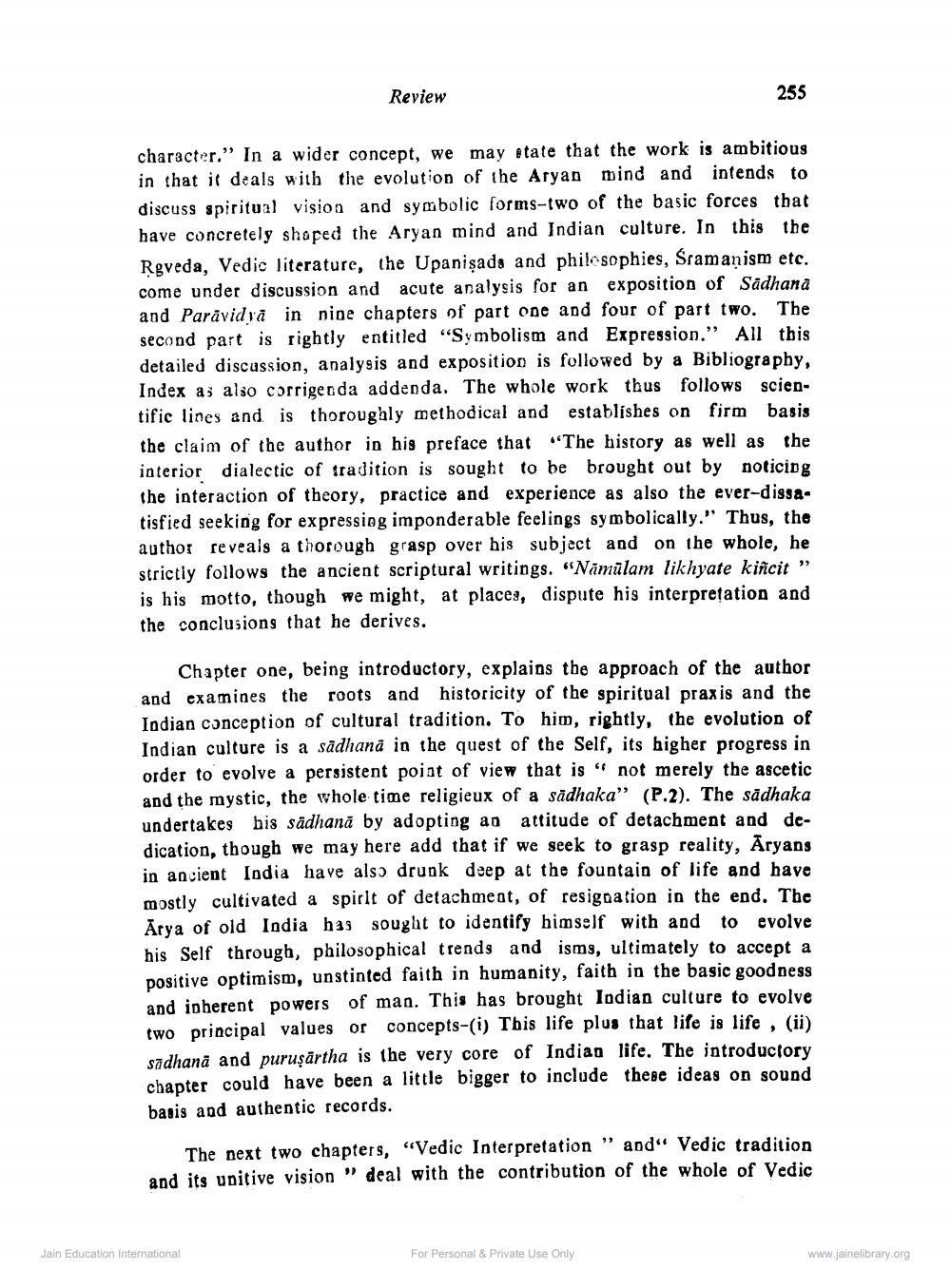________________
Review
255
character.” In a wider concept, we may state that the work is ambitious in that it deals with the evolution of the Aryan mind and intends to discuss spiritual vision and symbolic forms-two of the basic forces that have concretely shaped the Aryan mind and Indian culture. In this the Rgveda, Vedic literature, the Upanişads and philosophies, Sramaņism etc. come under discussion and acute analysis for an exposition of Sadhana and Parāvidra in nine chapters of part one and four of part two. The second part is rightly entitled "Symbolism and Expression.” All this detailed discussion, analysis and exposition is followed by a Bibliography, Index as also corrigenda addenda. The whole work thus follows scientific lines and is thoroughly methodical and establishes on firm basis the claim of the author in his preface that “The history as well as the interior dialectic of tradition is sought to be brought out by noticing the interaction of theory, practice and experience as also the ever-dissatisfied seeking for expressiog imponderable feelings symbolically." Thus, the author reveals a thorough grasp over his subject and on the whole, he strictly follows the ancient scriptural writings. "Nāmālam likhyate kiñcit " is his motto, though we might, at places, dispute his interpretation and the conclusions that he derives.
Chapter one, being introductory, explains the approach of the author and examines the roots and historicity of the spiritual praxis and the Indian conception of cultural tradition. To him, rightly, the evolution of Indian culture is a sadhana in the quest of the Self, its higher progress in order to evolve a persistent point of view that is “ not merely the ascetic and the mystic, the whole time religieux of a sādhaka” (P.2). The sādhaka undertakes his sādhana by adopting an attitude of detachment and dedication, though we may here add that if we seek to grasp reality, Aryans in ancient India have also drunk deep at the fountain of life and have mostly cultivated a spirit of detachmeat, of resignation in the end. The Arya of old India has sought to identify himself with and to evolve his Self through, philosophical trends and isms, ultimately to accept a positive optimism, unstinted faith in humanity, faith in the basic goodness and inherent powers of man. This has brought Indian culture to evolve two principal values or concepts-(i) This life plus that life is life, (ii) sadhana and puruşārtha is the very core of Indian life. The introductory chapter could have been a little bigger to include these ideas on sound basis and authentic records.
The next two chapters, “Vedic Interpretation” and“ Vedic tradition and its upitive vision " deal with the contribution of the whole of Vedic
Jain Education International
For Personal & Private Use Only
www.jainelibrary.org




